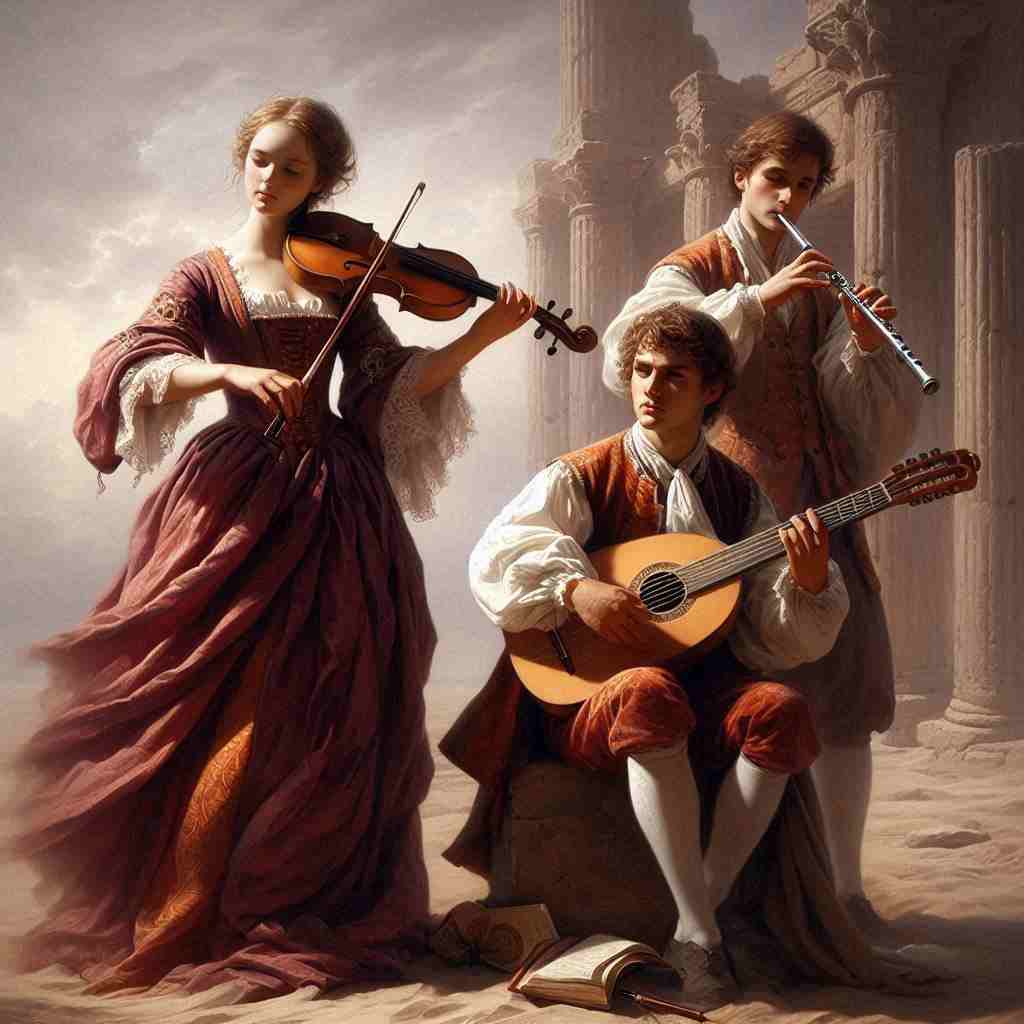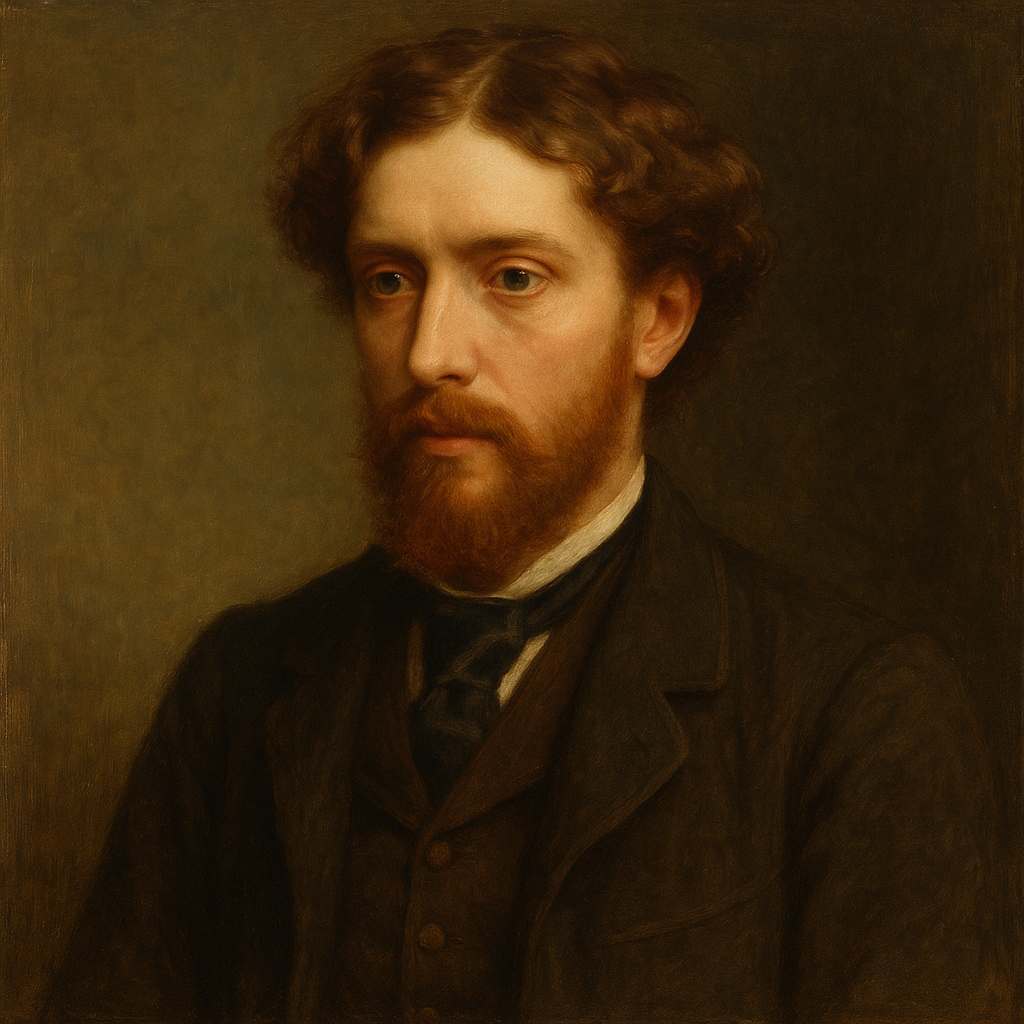Ode
Arthur O'Shaughnessy
1844 to 1881

We are the music-makers,
And we are the dreamers of dreams,
Wandering by lone sea-breakers,
And sitting by desolate streams;
World-losers and world-forsakers,
On whom the pale moon gleams:
Yet we are the movers and shakers
Of the world for ever, it seems.
With wonderful deathless ditties
We build up the world's great cities,
And out of a fabulous story
We fashion an empire's glory:
One man with a dream, at pleasure,
Shall go forth and conquer a crown;
And three with a new song's measure
Can trample an empire down.
We, in the ages lying
In the buried past of the earth,
Built Nineveh with our sighing,
And Babel itself with our mirth;
And o'erthrew them with prophesying
To the old of the new world's worth;
For each age is a dream that is dying,
Or one that is coming to birth.
Arthur O'Shaughnessy's Ode
Introduction
Arthur O'Shaughnessy's "Ode," often referred to by its opening line "We are the music-makers," stands as a testament to the enduring power of art and imagination in shaping human civilization. This poem, published in 1873 as part of O'Shaughnessy's "Music and Moonlight" collection, has captivated readers for generations with its rhythmic cadence and profound message. In this analysis, we will delve into the intricate layers of meaning, exploring the poet's use of language, structure, and thematic elements to craft a work that resonates with the timeless struggle and triumph of the creative spirit.
Historical and Literary Context
To fully appreciate O'Shaughnessy's "Ode," one must consider the historical and literary context in which it was written. The late 19th century was a period of significant social and cultural change, marked by rapid industrialization and scientific advancement. This era also saw the flourishing of the Romantic movement in literature, which emphasized emotion, individualism, and the power of imagination.
O'Shaughnessy, though often overlooked in discussions of major Victorian poets, was deeply influenced by these currents of thought. His work at the British Museum's zoological department provided him with a unique perspective on the intersection of science and art, a tension that is subtly reflected in the poem's juxtaposition of dreamers and world-shakers.
Structure and Form
The poem's structure is as carefully crafted as its content. Consisting of three eight-line stanzas, the "Ode" follows a regular rhyme scheme of ABABCDCD. This musical quality to the verse underscores the poem's opening declaration, "We are the music-makers," creating a harmony between form and content that persists throughout the work.
The use of alternating lines of iambic tetrameter and trimeter creates a rhythmic undulation, evoking the ebb and flow of creativity itself. This metrical choice also serves to emphasize key phrases, particularly in the shorter lines, which often contain the poem's most powerful images and ideas.
Imagery and Symbolism
O'Shaughnessy's masterful use of imagery is evident from the opening stanza. The juxtaposition of "lone sea-breakers" and "desolate streams" with the ethereal quality of "pale moon gleams" creates a landscape that is at once concrete and dreamlike. This duality reflects the nature of the artists and visionaries the poem celebrates—figures who inhabit both the physical world and the realm of imagination.
The imagery of construction and destruction runs throughout the poem, from the building of "the world's great cities" to the trampling of empires. This cyclical vision of creation and demolition suggests that the artist's role is not merely to create but to constantly renew and reshape the world.
Water imagery, prevalent in the first stanza, gives way to more terrestrial and celestial imagery in the subsequent verses. This progression mirrors the expanding scope of the poem's vision, from individual dreamer to world-shaping force.
Thematic Analysis
At its core, "Ode" is an exploration of the transformative power of creativity and vision. The poem posits artists and dreamers as the true architects of human civilization, capable of building empires with their "fabulous story" and toppling them with a "new song's measure."
The paradoxical nature of the creative individual is a central theme. Artists are portrayed as both "world-losers and world-forsakers" and "the movers and shakers / Of the world for ever." This contradiction suggests that true creativity requires a degree of separation from society, even as it profoundly shapes that society.
The poem also grapples with the concept of legacy and the cyclical nature of history. The reference to ancient cities like Nineveh and Babel, built and overthrown by the creative spirit, speaks to the enduring impact of art and ideas across millennia. The final lines, "For each age is a dream that is dying, / Or one that is coming to birth," encapsulate the poem's view of history as a constant process of renewal driven by human imagination.
Language and Tone
O'Shaughnessy's diction is carefully chosen to elevate the status of artists and dreamers. The use of regal and mythic language—"conquer a crown," "empire's glory"—imbues the creative act with a sense of grandeur and importance. This is balanced by more intimate, emotive language—"sighing," "mirth"—that humanizes the creative process.
The tone of the poem is one of quiet confidence and resolute purpose. There is no bombast or overt call to action; instead, the poem asserts the power of creativity as an immutable fact. This assurance is particularly evident in the refrain-like quality of "We are" statements that open each stanza, establishing a sense of identity and community among artists.
Influence and Legacy
"Ode" has had a lasting impact on literature and popular culture. Its opening lines have been quoted, paraphrased, and alluded to countless times, appearing in works ranging from Willy Wonka and the Chocolate Factory to political speeches. This enduring popularity speaks to the universal appeal of its message—the idea that individuals can shape the world through the power of imagination and creativity.
The poem's influence can be traced through the work of later poets and writers who grappled with similar themes of artistic purpose and the role of the creator in society. In many ways, O'Shaughnessy's "Ode" can be seen as a precursor to modernist explorations of the artist's role in an increasingly complex and fragmented world.
Critical Interpretations
Scholarly interpretations of "Ode" have varied over time, reflecting changing attitudes towards the role of art and the artist in society. Some critics have read the poem as a straightforward celebration of artistic power, while others have detected a note of irony or self-doubt in its grand claims.
Feminist readings of the poem have noted its gendered language and questioned the implicit masculinity of its vision of the artist-creator. Postcolonial interpretations have examined the implications of its empire-building imagery in the context of 19th-century British imperialism.
More recent ecocritical approaches have found resonance in the poem's natural imagery and its vision of human creativity as a force capable of both building and destroying worlds.
Conclusion
Arthur O'Shaughnessy's "Ode" remains a powerful and thought-provoking work more than a century after its composition. Its exploration of the transformative power of creativity continues to resonate in an age where the role of art and imagination in shaping our world is perhaps more crucial than ever.
The poem's enduring appeal lies in its ability to capture the dual nature of the creative spirit—at once isolated and deeply connected, capable of both destruction and creation. In its rhythmic lines and evocative imagery, "Ode" not only describes but embodies the very creative force it celebrates.
As we continue to grapple with questions of artistic purpose and the role of imagination in society, O'Shaughnessy's vision of artists as "the movers and shakers / Of the world for ever" remains a powerful affirmation of the essential role of creativity in human civilization. It challenges us to recognize the dreamers and music-makers among us and to value the transformative power of art in shaping our collective future.
This text was generated by AI and is for reference only. Learn more
Want to join the discussion? Reopen or create a unique username to comment. No personal details required!



Comments
No comments yet. Be the first to comment!